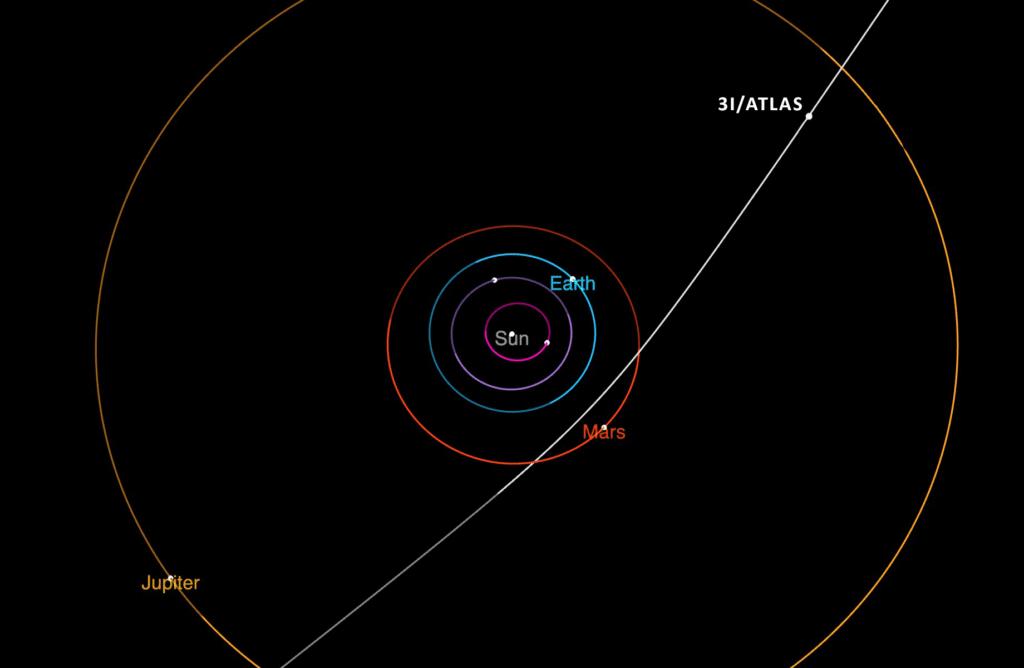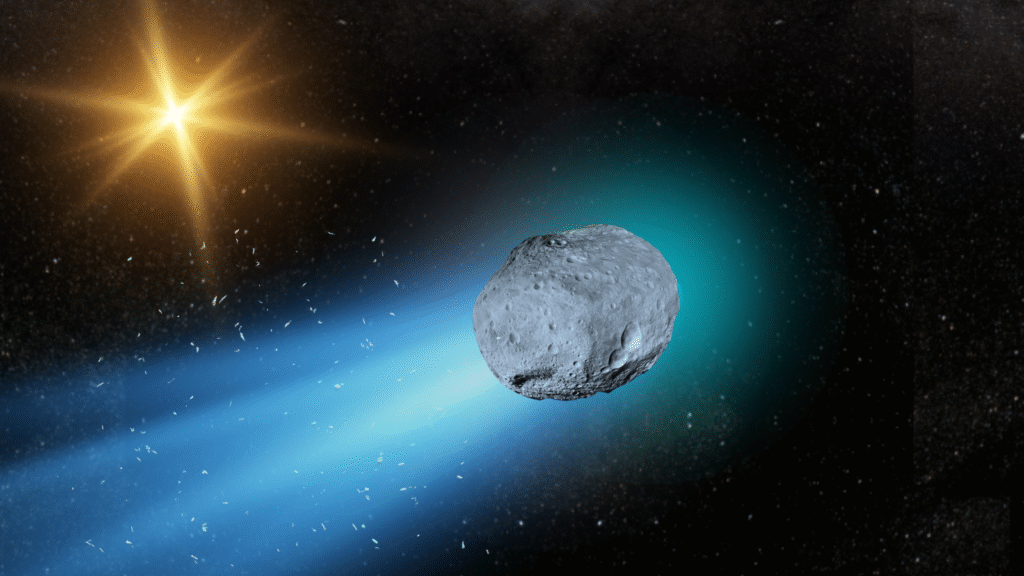A new visitor from beyond our solar system is hurtling towards us. Larger and older than ‘Oumuamua, it’s unlike anything we’ve…
What 3I/ATLAS Is and Why Astronomers Are Excited

Only two interstellar visitors have ever been confirmed, and now a third candidate, 3I/ATLAS, has jumped onto the scene with the kind of drama that makes astronomers drop everything. video’s published on the subject over the last few months describe how this object has scientists buzzing and the public hooked. The “ATLAS” in its name points to a discovery by the Asteroid Terrestrial-impact Last Alert System, a sky survey designed to catch fast, faint movers before they slip past. The “3I” tag signals that, once fully confirmed, it would follow 1I/‘Oumuamua and 2I/Borisov as the next official interstellar interloper. That context alone is shocking—these objects are so rare that each one effectively opens a new chapter in planetary science. The video emphasizes how early observations already suggest that 3I/ATLAS is not just another odd rock, but a messenger from a very different neighborhood of our galaxy.
What makes this especially gripping is the sense of time pressure: interstellar objects do not linger. They whip through the inner solar system in a matter of weeks to months, and if observers hesitate, the chance to collect crucial data is gone for good. The presenter underscores that urgency and explains why telescopes worldwide are quickly coordinating follow-up to pin down the orbit, brightness changes, and any hint of activity. That combination of rarity and urgency is why 3I/ATLAS is being treated as both a scientific opportunity and a once-in-years spectacle. It is the kind of event that turns late-night observing runs into can’t-miss moments.
How 3I/ATLAS Compares to ‘Oumuamua and 2I/Borisov
3I/ATLAS appears larger than ‘Oumuamua, which itself was a strange, relatively small object that defied easy classification. While ‘Oumuamua showed no obvious comet-like coma and surprised everyone with subtle non-gravitational acceleration, 2I/Borisov behaved much more like a traditional comet with visible outgassing. 3I/ATLAS may land somewhere else on that spectrum, and its size hints that we could be looking at a different kind of body than the first two. The presenter frames this comparison carefully: larger size can mean different thermal behavior, different surface processing, and potentially a different origin story. That matters because it lets scientists test whether interstellar objects are wildly diverse or share common traits shaped by similar birthplaces.
Age is the other big headline. Described as older than ‘Oumuamua, 3I/ATLAS may carry deeper “space weathering” scars and chemistry that tell a longer story of exposure to cosmic rays and micrometeoroid impacts. If that interpretation holds, its color, reflectivity, and surface texture could look markedly different. The more mature an interstellar traveler is, the more clues it might preserve about ancient disks around other stars. Even coarse estimates of size and age can be scientifically explosive because they feed directly into models of how material is launched from distant systems. That is the kind of comparison that turns a rare sighting into a laboratory for formation theories.
Trajectory, Speed, and When It Will Be Best Seen
3I/ATLAS is on a hyperbolic path, which is the signature of an object that did not form here and will not remain here. The video explains that its inbound speed and trajectory mark it as unbound to the Sun, meaning the visit will be brief, brightening as it nears the inner solar system and then fading as it rushes back into the dark. Viewers are reminded that hyperbolic interstellar objects carry a measurable “excess velocity” at infinity—evidence that even the Sun’s gravity cannot capture them. As the geometry between the object, Earth, and the Sun changes, observing conditions improve and then rapidly worsen. That is why timing matters so much for spectroscopy, photometry, and any attempt to detect dust or gas. The presenter stresses that astrometry in the coming weeks is essential to narrowing the orbit and predicting the best windows for both professional and serious amateur observations.
There is also a practical viewing angle. Watchers are encouraged to track updates from observatories as the object brightens toward its closest approach to the Sun and best Earth-based visibility. The exact dates and sky position will drive which hemispheres and instruments get prime access. If it stays compact and inactive, small telescopes may struggle; if it shows a faint coma, the diffuse light could either help reveal composition or make precise measurements trickier. The speed is thrilling but unforgiving—3I/ATLAS will not wait for clear weather or a free night on the big telescopes. That creates a global “now or never” campaign, much like we saw with the previous interstellar visitors.
What It Might Be Made Of: Composition, Activity, and Surface Clues

The video in this article explains how astronomers will tease out what 3I/ATLAS is made of by measuring its color, reflectivity (albedo), and any telltale spectral fingerprints. If it behaves like a comet, we might see gas emissions and dust that reveal ices and organics; if it stays inert like a rocky or extremely devolatilized body, the spectrum could be subtler and harder to read. Color indices can hint at space weathering and composition, pointing to whether the surface is rich in complex organics or covered in darker, reddened material. Photometric lightcurves will track how its brightness changes as it rotates, which can hint at shape, spin rate, and surface patchiness. Rapid, irregular changes might point to outgassing jets or tumbling; steadier changes might imply a more regular shape and rotation.
The presenter notes that “older than ‘Oumuamua” is not just a poetic line—it implies long exposure that could harden or dehydrate surface layers. That could make activity faint even if buried ices remain, and it could push the spectrum toward redder slopes seen in weathered bodies. If activity does appear, the mix of dust sizes and gas species will become a fingerprint of its birthplace. If it remains quiet, that silence is still loud scientifically, suggesting either severe devolatilization or a composition that differs from classical comets. Either way, 3I/ATLAS gives researchers a chance to test how diverse the interstellar population really is.
Science Payoffs and Future Missions to Interstellar Objects
The promise of 3I/ATLAS is that it can pressure-test theories of how material gets ejected from alien planetary systems. If its composition and behavior look different from both ‘Oumuamua and 2I/Borisov, that argues for a diverse interstellar population shaped by many kinds of birth environments. If it shares traits with one or both, that suggests common processes at work in protoplanetary disks across the galaxy. The video also touches on mission concepts: catching up to an interstellar object is extremely hard because the inbound speed is high and launch windows are tight. Still, there is growing interest in “ready-to-pounce” interceptors parked at strategic locations that can sprint when alerts like this arrive. Such missions could one day return images, in-situ measurements, or even samples that transform our view of material beyond the Sun’s reach.
Source: Original YouTube Video

Jan loves Wildlife and Animals and is one of the founders of Animals Around The Globe. He holds an MSc in Finance & Economics and is a passionate PADI Open Water Diver. His favorite animals are Mountain Gorillas, Tigers, and Great White Sharks. He lived in South Africa, Germany, the USA, Ireland, Italy, China, and Australia. Before AATG, Jan worked for Google, Axel Springer, BMW and others.




